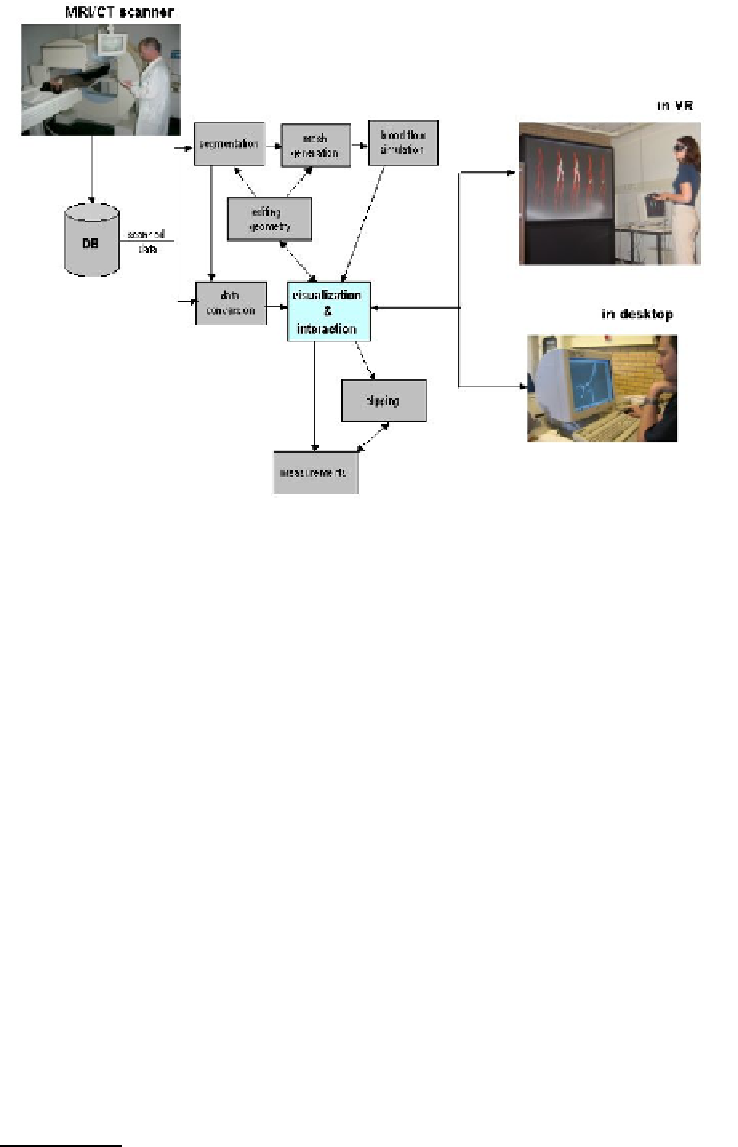Information Technology Reference
In-Depth Information
Fig. 3.
An interactive simulated vascular reconstruction system.
aneurysm
3
. To find the best solution for the treatment of a particular vascular
disorder is not always an easy task and depends to a great extent on the current
stage of a disease and the exact location of the affected zone of an artery [21].
The aim of the VRE is to provide a clinician with an interactive virtual sim-
ulated environment to visualize and explore the patient's vascular condition to
help in finding solutions for further treatment.
The scheme shown in Fig. 3 presents the architecture of the VRE system. The
input data for conducting an experiment is a patient's data, which comes either
directly from a scanner in a hospital or from a remote storage or a database
(DB). By means of the VRE system the end-user may assess medical scans in
2 or 3D, simulate the vascular reconstruction procedure and validate possible
ways of treatment by comparing a patient's blood circulation before and after
the simulated surgical intervention has been applied. The VRE solver simulates
blood flow parameters, which are visualized to give a surgeon a possibility to
check whether the blood flow in the affected area will be normalized or not.
The potential users of the VRE are vascular surgeons, radiologists and tech-
nologists, as well as medical novice specialists, students, and trainers. [8]
A detailed description of the functionality of the VRE system is far beyond
the scope of this chapter. To add to the understanding of the VRE Table 1
provides a brief description of each functional element from Fig. 3. Readers
interested in getting more information about the VRE may refer to earlier work
[2, 18, 22].
3
An aneurysmal disease is a balloon like swelling in the artery [21].

Search WWH ::

Custom Search